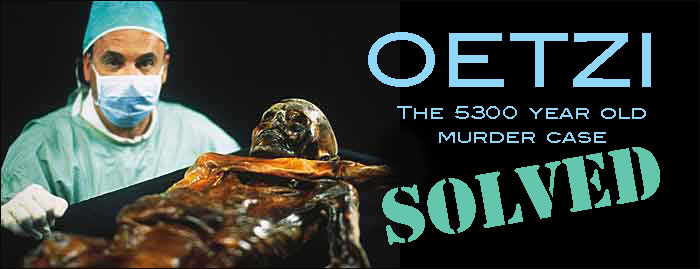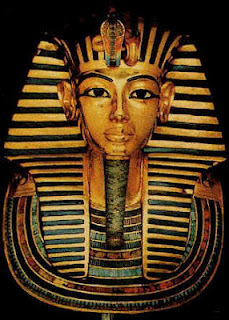The Enchantress of Florence

The Enchantress of Florence: Salman Rushdie
The first minister and the emperor were standing on the ramparts of the city looking out at the wheeling crows. “Birbal,” Akbar mused, “how many crows do you imagine there are in my kingdom?” “Jahanpanah,” Birbal replied, “there are exactly nine hundred and ninety-nine thousand, nine hundred and ninety-nine.” Akbar was puzzled. “Suppose we have them counted,’’ he said. “and there are more than that, what then?” “That would mean,” Birbal replied, “that their friends from the neighboring kingdom have come to visit them.” ‘And if there are fewer?’ “Then some of ours will have gone abroad to see the wider world.”
A linguist was waiting at Akbar’s court, a visitor from a distant Western land: a Jesuit priest who could converse and dispute fluently in dozen of languages. He challenged the emperor to discover his native language. While the emperor was pondering the riddle, his first minister circled the priest and all of a sudden kicked him violently in the backside. The priest let out a series of oaths- not in Portuguese, but in Italian. “You observe, Jahanpanah,” said Birbal, “that when it’s time to unleash a few insults, a man will always choose his mother tongue.”
“If you were an atheist, barbel,” the emperor challenged his first minister, “what would you say to the true believers of all the great religions of the world?” Birbal was a devout Brahmin from Trivikrampur, but he answered unhesitatingly, “I would say to them that in my opinion they were all atheists as well; they merely believe in one god less than each of them.” “How so?” the emperor asked. “All true believers have good reason for disbelieving in every god except their own,” said Birbal, “and so it is they who, between them, give me all the reasons for believing in none.”
Above is a gleaning from the book titled The Enchantress of Florence by Selman Rushdie. ISBN 978-0-679-64051-6
Footnotes by bunpeiris
[1] On 19th September 1991, when the spectacular discovery of the mummified corpse of a late well clothed [and complete with a leather pouch not unlike the one, you Sri Lanka Holidays tourists fasten onto your waist belt] and well equipped Stone Age man [ killed following a wound sustained in a skirmish with a rival group], now popularly called iceman [death: 5300 years ago; height: 5 feet 2 inches; weight:110 pounds; age at the death: 25-35 years; well tattooed: therapeutically] melted out of a glacier in a small mountain passage named Tiesenjoch, high in the Tyrolean Alps, was made by the German national Helmut Simon (67) & his wife Erika Simon 300 feet on the Italian side, the first scientist to examine the cadaver was forensic pathologist from the University of Innsbruck, Austria, Prof. Rainer Henn (64). The second scientist to examine ice man was Dr. Markus Egg, a prehistorian at the Roman-Germanic Central Museum in Mainz, Germany.
Thanks to the Iceman, today we know who came first: Hen. Birbal was right. [ What the hell are you smoking, man?] But then Ice man wouldn’t leave all of us content. Though Ice man solved the perennial question of who came first; egg or hen, he created another mystery: a series of death consequent to the monumental discovery.
A year later Rainer Henn, who placed the Iceman in a body bag with his bare hands, was killed in an automobile accident on his way to a conference where he would discuss the results of his work on the Iceman. He was the first to die among those associated with the ice man.
Helmut Simon, 69, who, along with his wife, discovered the Iceman’s body died second.The hiker returned to the region to celebrate winning a £50,000 court
battle over rights to the mummy. He set out in fine weather but a
blizzard set in and he froze to death — just like the mummy. Since he
hadn’t signed the court papers his widow wasn’t granted the reward.
Kurt Fritz [52], a mountain guide who supposedly led Dr. Henn to the Iceman’s body and who was said to have uncovered the Iceman’s face was killed in an avalanche.
Rainer Hölz [47], a filmmaker who made a documentary about the recovery of Ötzi from the ice for the ORF network. He died of a brain tumor.
Dieter Warnecke [45], who headed the rescue team looking for Simon’s frozen body. He died of a heart attack just hours after Helmut Simon’s funeral.
Konrad Spindler [66], who led the scientific team that recovered and examined the Iceman in Innsbruck, Austria, in 1991 died from complications related to multiple sclerosis.
Tom Loy [63], a molecular archaeologist who discovered human blood on Ötzi’s weapons and clothing and who was featured in a National Geographic documentary about the Iceman died of a hereditary blood disease, first diagnosed about 1992 (that caused blood clots to form) in the year 2002.
The series of deaths that was brought about following the discovery of Ice man, recalls such unexplained phenomena to have occurred in the past. The most famous series of deaths was related to discovery of a cadaver is related to Tutankhamun in the 20th century. The opening of on November 29, 1922 was to follow with a series of death starting from the death of George Edward Stanhope Molyneux Herbert, 5th Earl of Carnarvon, the financial backer of the search, on 5 April 1923) and the unexplained mystery was called “The curse of Tutankhamun”.
However, Howard Carter, English archaeologist and Egyptologist, who discovered and opened the tomb of the 14th-century BC pharaoh lived till 1939.
Sir Arthur Ignatius Conan Doyle (1859 –1930), a Scottish physician and writer, most noted for his stories about the detective Sherlock Holmes, is reported to have said the death connected to the tomb of Tutankhamen could perhaps was caused by a deadly fungus planted therein, at the time of the closure of the tomb, to punish the grave robbers.
While there have been many such unexplained mysteries related to discovery of ancient treasures around the world, Sri Lanka too had its share of the mysteries. One of those little known tales are related to Somawathiya Chethiya: the Death of a Relic Hunter in Ceylon
When it was revealed that the Sacred Right Tooth Relic of Buddha was enshrined in the relic chamber of Somawathiya Chethiya (Stupa), Giragama Nilame or Kudamudiyanse Giragama of Dalada Maligawa Diyawadane Nilame (Appointed Guardian of the other existing tooth relic (The Holy Temple of the Tooth) (1882–1897) launched a search for the lost stupa. The misdirected intention of the Guardian of the Holy Temple of Tooth at Kandy was to secure the custody of the right tooth relic & to deposit it alongside the left tooth relic at Holy Temple of Tooth at Sri Lanka Holidays Kandy. It is said that the guide lost his sight on the day the team reached the stupa. During the excavation at Somawathiya Stupa cobras surfaced & a swarm of wasps attacked the team. While fleeing from the wasps the Guardian of The Holy Temple of Tooth was injured. He later died of the wound.
Relics of Buddha wouldn’t be disturbed or destroyed by a human hand or its agents: those relics are protected by the superior beings living in other worlds, who listened to the discourses of Buddha a couple of millenniums ago.
IMAGES ARE REPRODUCED BY THE KIND COURTESY OF THE OWNERS ANS LINKED TO THE OWNER WEBSITES.
Featureed image is by kind courtesy of http://www.viewzone.com/oetzi.html






